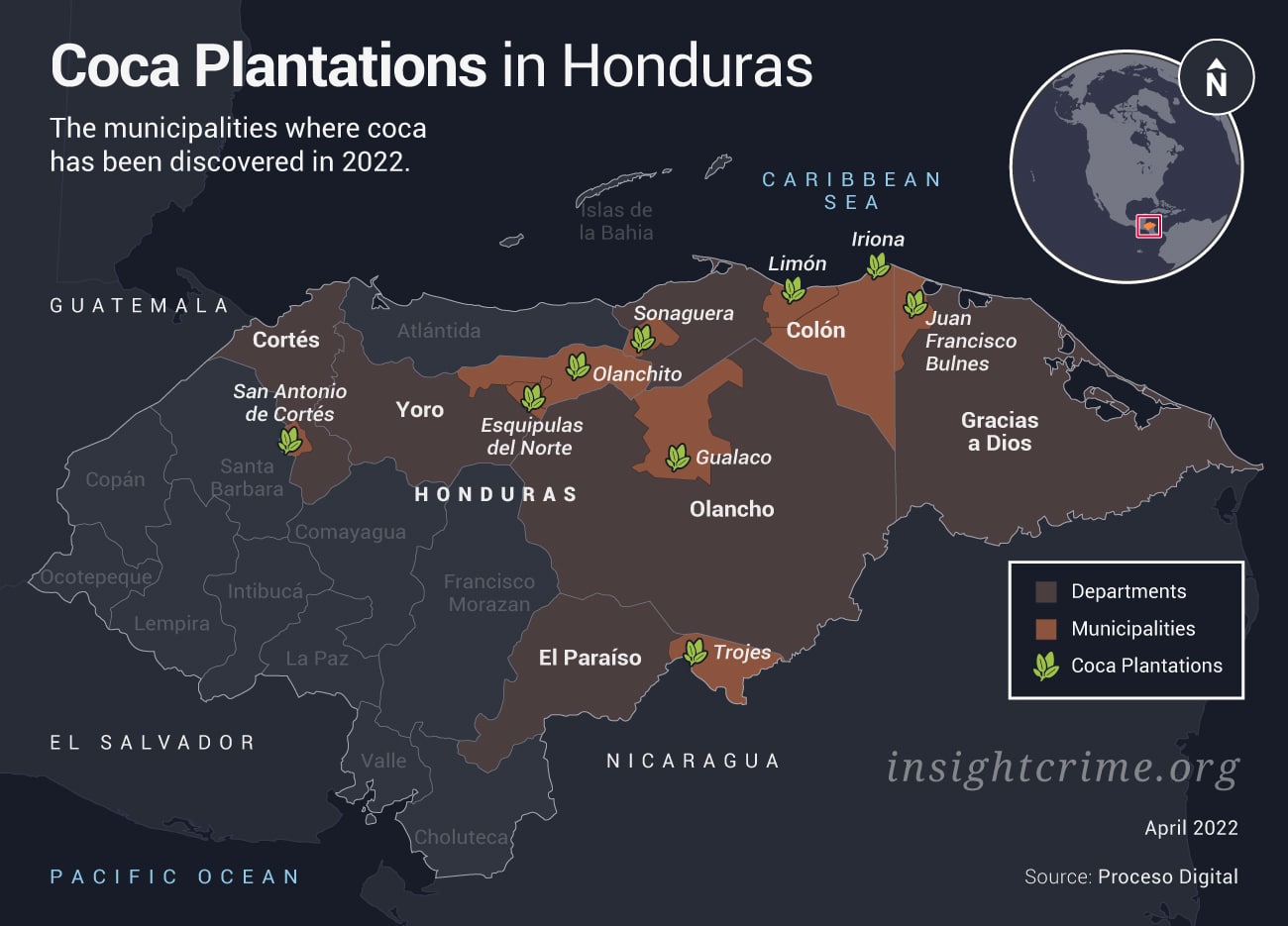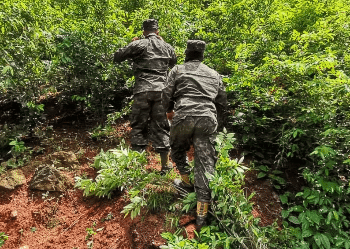Coca farms and cocaine production camps are proliferating in Honduras, showing that the illicit crop has taken root in the country after years of low-level experimentation.
Between January and March this year, authorities have destroyed some 543,000 coca plants, about 11,000 more during all of 2021, when authorities destroyed a record high of 532,000 plants, Proceso Digital reported.
The two largest coca farms were discovered in the hillsides of Iriona, a municipality in the Colón department, on Honduras’ Atlantic coast. The farms, which held some 345,000 plants over 14 hectares, had three laboratories capable of producing 50 kilograms of cocaine every month, according to authorities. Officials alleged that the cocaine belonged to the Montes Bobadilla drug clan, a family trafficking group with roots in Colón.
SEE ALSO: Honduras Proves Fertile Ground for Coca
The hotbed for coca crops in Honduras has been the mountains of Colón and Olancho, a department just to Colón’s south. The nearby departments of Yoro and Gracias a Dios, a jungle region that has long served as a corridor for cocaine, also form part of what appears to be Honduras’ primary coca-growing region.
Crops, however, have appeared in other parts of the country this year. Authorities eradicated some 20,000 plants in the town of Trojes, in the southern department of El Paraíso, bordering Nicaragua. Another farm with some 20,000 plants was discovered in the town of San Antonio de Cortés, south of San Pedro Sula.

Drug processing sites have also been increasingly discovered alongside coca plantations. The crude laboratories contain materials to refine coca leaves into paste, including urea and gasoline.
Plants on coca farms in Honduras have grown in height in recent years as well. Seizures have found plants measuring up to 2.5 meters, approaching the size of South American crops.
InSight Crime Analysis
While the amount of coca crops in Honduras is a fraction of what’s seen in Andean countries, cultivating coca and refining cocaine in the Central American nation cuts costs, shortens supply chains, and reduces risks of shipments being seized in transit – all advantages to traffickers.
Though Honduras has long served as a transit hub for South American cocaine moving north, it was not until 2017 that the first large coca farm was discovered in Olancho. Three years later, coca eradication by authorities jumped tenfold, from 40,000 plants in 2019 to more than 400,000 in 2020.
“This isn’t a test; it’s production,” Dardo Justino Rodríguez, an analyst on politics and crime in Honduras, told InSight Crime.
The country’s size restricts wide-scale coca cultivation, but crops have spread to regions where they had not been seen before, Rodríguez said. Coca has begun to turn up in the Mosquitia coastal area, a vast jungle region that is hard for authorities to access and serves as a drug flight hub and cocaine waystation. Growers have also begun to separate plantations into small patches, allowing coca to be concealed by other vegetation and to be less visible to air patrols, Rodríguez said.
SEE ALSO: Honduras Goes From Transit Nation to Cocaine Producer
Coca appears to have become part of the permanent trafficking infrastructure in Honduras. During military operations, crops are often discovered near hidden runways, cocaine production camps and cocaine stashes. Small trafficking groups are likely behind these operations, Rodríguez said.
“They are not going to be able to produce as much cocaine as in Colombia,” he said. “But they will be able to fabricate a part of it. And having local production means fewer frontiers to cross and fewer risks to reach the US. You just have to cross Guatemala and Mexico. Two countries that are highly corrupt and that have connections to organized crime.”
With a glut of cocaine continuing to move out of South America to Central America, supply shortages do not appear to be driving production in Honduras, said Nicholas Magliocca, a University of Alabama associate professor whose recent research analyzed cocaine trafficking trends in Central America, though not coca cultivation.
The surge in cocaine trafficking to Europe via container ships may be stoking Honduran traffickers’ efforts to produce cocaine. In recent years, large amounts of cocaine have been discovered in cargo headed to Europe from Guatemalan and Honduran ports.
Regional traffickers may be looking to operate independently from South American suppliers, Magliocca said. Honduras’ new security minister, Ramón Sabillón, told AFP in a recent interview that the cartels in the country are looking to become “semi-autonomous.”
Magliocca said that if these groups “could move cocaine to the ports and get into some of those container ships, that would be a sufficient profit motivation.”

